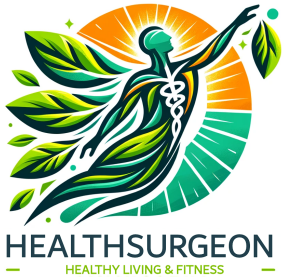Our understanding of medicine and health has evolved dramatically over time, shifting from early mystical and supernatural explanations of illness to the modern, science-based approaches we rely on today. These changes reflect the broader development of human knowledge, the growth of scientific methods, and improvements in technology. Here is an overview of how our perceptions and practices in medicine and health have changed across different eras.
-
Ancient Beliefs and Mysticism
In ancient times, health and disease were often viewed through a spiritual or mystical lens. Illnesses were believed to be the result of divine punishment, evil spirits, or an imbalance in supernatural forces. Healing practices were closely tied to religious rituals, and treatments often included prayer, offerings to gods, or rituals performed by shamans or priests.
- Egypt and Mesopotamia: These ancient civilizations had early forms of medical practice, but they heavily relied on spiritual explanations for disease. The Egyptians, for instance, had advanced knowledge of anatomy from mummification, yet they believed many diseases were caused by the gods.
- Traditional Chinese Medicine (TCM): Ancient Chinese health systems, including the concept of yin and yang and the balance of elements, influenced treatments like acupuncture and herbal medicine, which are still practiced today.
- Ayurveda (India): This ancient Indian system, still influential today, considered health to be the balance of the body’s elements (doshas). While based on spiritual and elemental principles, it involved practices like diet and herbal treatments.
-
The Humoral Theory (Classical Greece and Rome)
The Greeks and Romans laid the foundation for what we would now call early medicine, moving away from entirely spiritual views. The physician Hippocrates (c. 460–370 BCE), often considered the “father of modern medicine,” proposed the humoral theory, which posited that the body contained four humors: blood, phlegm, yellow bile, and black bile. Disease was thought to result from an imbalance in these humors, and treatments focused on restoring this balance through diet, exercise, bloodletting, and purging.
- Galen: A Roman physician (c. 129–216 CE), Galen expanded upon the humoral theory, and his writings dominated medical thought for over a millennium. Though some of his ideas were incorrect (he misunderstood much of human anatomy due to reliance on animal dissection), his work influenced medical practice well into the Middle Ages.
-
Middle Ages: The Dominance of Spiritual and Humoral Beliefs
In the Middle Ages (5th to 15th centuries), medicine was largely controlled by religious institutions in Europe, and the humoral theory persisted. Illness was still frequently attributed to divine punishment or demonic forces, and religious healing (e.g., prayer, relics) was common.
However, important developments occurred in other regions:
- Islamic Golden Age (8th–14th centuries): Scholars like Avicenna (Ibn Sina) and Al-Razi (Rhazes) translated and built upon Greek medical texts, introducing new medical knowledge and practices, including hospitals, pharmacology, and hygiene. Avicenna’s Canon of Medicine became a central medical text for centuries in both the Islamic world and Europe.
-
The Renaissance: The Birth of Modern Scientific Medicine
The Renaissance (14th–17th centuries) marked the beginning of a more empirical and observational approach to medicine. Scholars began to challenge long-standing beliefs, conducting dissections and experiments to understand human anatomy and disease mechanisms.
- Andreas Vesalius (1514–1564): A pivotal figure, Vesalius corrected many of Galen’s errors through human dissection, publishing his groundbreaking book De Humani Corporis Fabrica (On the Fabric of the Human Body). His work laid the foundation for modern anatomy.
- Paracelsus (1493–1541): Paracelsus rejected the humoral theory and introduced the use of chemicals and minerals in medicine, paving the way for pharmacology.
- William Harvey (1578–1657): Harvey’s discovery of the circulatory system and the heart’s role as a pump was a landmark in understanding human physiology, transforming medical science.
-
The Enlightenment and the Birth of Scientific Medicine
The 18th and 19th centuries saw a shift toward the scientific method in medicine. The Enlightenment promoted reason and evidence over tradition, leading to major advancements.
- Germ Theory of Disease: In the 19th century, Louis Pasteur and Robert Koch proved that microorganisms (germs) were responsible for many diseases, replacing the outdated miasma (bad air) theory. Pasteur’s work on vaccination and Koch’s development of methods to identify specific pathogens laid the foundation for modern microbiology.
- Vaccination: Edward Jenner developed the first smallpox vaccine in 1796, which was the beginning of immunology and a major turning point in preventing infectious diseases.
- Surgery and Anesthesia: Surgeons like Joseph Lister advanced antiseptic techniques, dramatically reducing infection rates, while the introduction of anesthesia allowed for more complex and humane surgical procedures.
-
20th Century: The Age of Modern Medicine
The 20th century saw explosive growth in medical science due to the discovery of new technologies and a deeper understanding of biology.
- Antibiotics: The discovery of penicillin by Alexander Fleming in 1928 revolutionized the treatment of bacterial infections, transforming once-deadly diseases like pneumonia and tuberculosis into treatable conditions.
- Medical Imaging: X-rays, MRI, and CT scans allowed doctors to see inside the body without surgery, drastically improving diagnostic accuracy.
- Vaccination Campaigns: Large-scale vaccination programs eradicated smallpox and drastically reduced other diseases, such as polio and measles, improving public health globally.
- Genetics and Molecular Biology: The discovery of DNA’s structure by James Watson and Francis Crick in 1953 opened new doors in understanding hereditary diseases, leading to the development of genetic testing, gene therapy, and personalized medicine.
-
21st Century: The Era of Precision and Preventive Medicine
The current era of medicine emphasizes personalized and precision medicine, where treatments and interventions are tailored to individual genetic profiles, lifestyles, and environments.
- Genomics and Biotechnology: Advances in genome sequencing have enabled scientists to identify genetic markers for diseases, leading to more targeted therapies (e.g., cancer immunotherapy).
- Telemedicine and Wearable Technology: The rise of digital health platforms, mobile apps, and wearable devices (e.g., fitness trackers, smartwatches) has revolutionized how people monitor and manage their health in real-time.
- Artificial Intelligence (AI): AI is now being used in diagnostics, treatment planning, and even surgery, improving outcomes and reducing errors.
How Our Understanding of Health Has Changed:
- From Mysticism to Science: Health was once viewed as controlled by supernatural forces, but it is now understood through the lens of biology, chemistry, and physics.
- The Role of Prevention: Early medicine focused on treating symptoms or balancing “humors,” while modern medicine emphasizes disease prevention through vaccines, lifestyle changes, and public health initiatives.
- A Shift Toward Personalized Care: In the past, treatments were generalized for all patients. Today, we focus on precision medicine, tailoring treatments to the individual based on genetics, environment, and lifestyle factors.
- Understanding the Microbiome and Chronic Disease: There’s a growing appreciation for the role of the gut microbiome and its impact on overall health, including immune function and chronic diseases. The modern approach addresses not just infectious diseases but also conditions like diabetes, heart disease, and mental health disorders.
Conclusion:
Our understanding of medicine and health has transformed over centuries, progressing from mystical and spiritual interpretations to a sophisticated, science-based system of knowledge. The development of germ theory, antibiotics, vaccines, medical imaging, and now precision medicine and AI, has dramatically improved life expectancy and quality of life. As medical science continues to advance, our ability to prevent, diagnose, and treat diseases will become even more precise and effective, bringing us closer to an era of truly personalized health care.
Sources:
https://pmc.ncbi.nlm.nih.gov/articles/PMC2776239/
https://www.britannica.com/science/history-of-medicine
https://pmc.ncbi.nlm.nih.gov/articles/PMC5433581/
https://pmc.ncbi.nlm.nih.gov/articles/PMC3468637/









